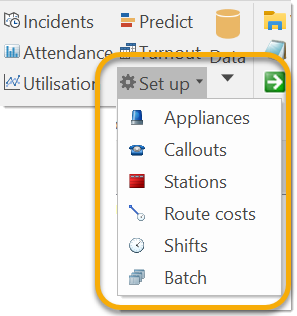Modelling Incident Data
The aim of modelling is to assess how a set of resources based at a ‘station’ respond to demand (i.e. a defined set of appliance requests).
Modelling can:
- Predict Demand at stations. This creates a colour-coded worksheet showing how the set of appliances will be used hour-by-hour for each weekday. Free appliances are placed at bases with greatest demand.
- Run a model by simulating the turn out of appliances to requests. Here appliance requests are stacked sequentially and Workload Modeller determines which available appliance at which station is best suited to respond. It also marks the appliance as unavailable for the duration of the callout.
Note: The output of this option is a ‘model-output’ table in the database which can then be analysed with Analysing tools.
There are different ways to generate models using available data.
-
Historic data is the foundation for Workload Modeller. It consists of Real data (actual incidents and callouts). Historic data is most commonly used as input for modelling and analysis.
-
Base Case is a model based on current service configuration. It is a bridge between ‘real world’ conditions and the model environment.
-
Scenario models include changes made to the setup. They can be compared with the Base Case to see the impact of any changes.
For comprehensive modelling, data should be easily accessible in 'sets' (appliances, stations and resources)
To see all Modelling functions, click the Set up drop-down menu:
